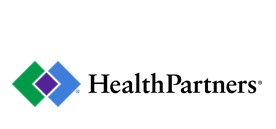Understand and Prevent Unintended and Implicit Bias
The unconscious mind affects what we think, feel and do — all the time. But it is not easy to see how and when that happens. Are you aware of assumptions you make? Can you anticipate when you are likely to fall into familiar or preferred patterns of thought and action? Unconscious, or implicit bias, is an association that people unknowingly hold and express automatically without conscious awareness. It's how our brain automatically connects certain characteristics or judgements, whether they are true or false, with a particular person or group. We are all susceptible to these biases. These attitudes, stereotypes and opinions unconsciously affect our understanding, actions and decisions.
Clinicians can often be unaware that unconscious biases may affect the care they provide since this is inconsistent with their conscious attitudes, motivations and intentions of excellent care for all patients. Nevertheless, the evidence is clear that unconscious bias plays a role in impacting care. Research suggests that implicit bias may contribute to health care disparities by shaping clinician behavior and producing differences in medical treatment by race, ethnicity, gender or other characteristics. This can lead to patients' mistrusting the healthcare system based on historical trauma and their own lived experiences.
In this two-part activity (e-learning followed by live facilitated discussion), clinicians will develop strategies to recognize and prevent implicit bias in order to mitigate its negative impact on healthcare disparities and establish trust with their patients.
Target Audience
All HealthPartners Clinicians
Learning Objectives
Following this learning activity (consisting of e-learning followed by facilitated discussion), participants will be able to:
- Describe how our unconscious thinking system works
- Explain how unconscious biases can negatively affect those around us
- Apply strategies to prevent unconscious bias
- Examine how unconscious bias impacts patient interactions and trust-building and medical decision-making
Supplemental Resources
If you are using Chrome and would like to open the file in a new tab, right click the hyperlink and select "Open Link in New Tab"
![]() AMA Strategic Plan to Embed Racial Justice and Advance Health Equity 2021-2023
AMA Strategic Plan to Embed Racial Justice and Advance Health Equity 2021-2023
![]() Bias Prevention Job Aid. Diversity Science.
Bias Prevention Job Aid. Diversity Science.
![]() Prevalent Cognitive and Social Biases. Diversity Science.
Prevalent Cognitive and Social Biases. Diversity Science.
![]() Unintended Bias in Health Care. Strategies.
Unintended Bias in Health Care. Strategies.
The Problem with Race-Based Medicine. Ted Talk by Dorothy Roberts (Video opens in YouTube)
Disclosure Statement:
Due to the non-clinical nature of the topic being presented, there is no need to identify, mitigate or disclose relevant financial relationships for this accredited continuing education activity.
There is no commercial support for this activity.
HealthPartners is accredited by the Accreditation Council for Continuing Medical Education (ACCME) to provide continuing medical education for physicians.
HealthPartners Office of Continuing Medical Education designates this other activity (comprised of e-learning followed by live facilitated discussion) for a maximum of 2.00 AMA PRA Category 1 Credit(s)™. Physicians should claim only the credit commensurate with the extent of their participation in the activity.
This program is designed to meet the Minnesota Board of Nursing requirements. It is the responsibility of each participant to determine if the program meets the criteria for licensure or recertification for their discipline.
Successful completion of this CME activity, which includes participation in the evaluation component, enables the participant to earn up to:
- 2 MOC points in the American Board of Internal Medicine's (ABIM) Maintenance of Certification (MOC) program
- 2 MOC points in the American Board of Pediatrics’ (ABP) Maintenance of Certification (MOC) program
- Their required annual part II self-assessment credit in the American Board of Otolaryngology – Head and Neck Surgery’s Continuing Certification program (formerly known as MOC)
- 2 credits toward the CME component of the American Board of Anesthesiology’s redesigned Maintenance of Certification in AnesthesiologyTM (MOCA®) program, known as MOCA 2.0®. Please consult the ABA website, www.theABA.org, for a list of all MOCA 2.0 requirements
- 2 MOC Points toward Lifelong Learning in the American Board of Pathology (ABPath) Continuing Certification program
- 2 credits toward the CME and/or Self-Assessment requirements of the American Board of Surgery’s Continuous Certification program
It is the CME activity provider's responsibility to submit participant completion information to ACCME for the purpose of granting ABIM, ABP, ABOHNS, ABA, ABPath and ABS (MOC) credit/points and/or recognizing participation.
Available Credit
- 2.00 AMA PRA Category 1 Credit™
- 2.00 AttendanceThis program is designed to meet the Minnesota Board of Nursing’s requirements. It is the responsibility of each nurse to determine if the program meets the criteria for licensure or recertification in their discipline.

 Facebook
Facebook X
X LinkedIn
LinkedIn Forward
Forward